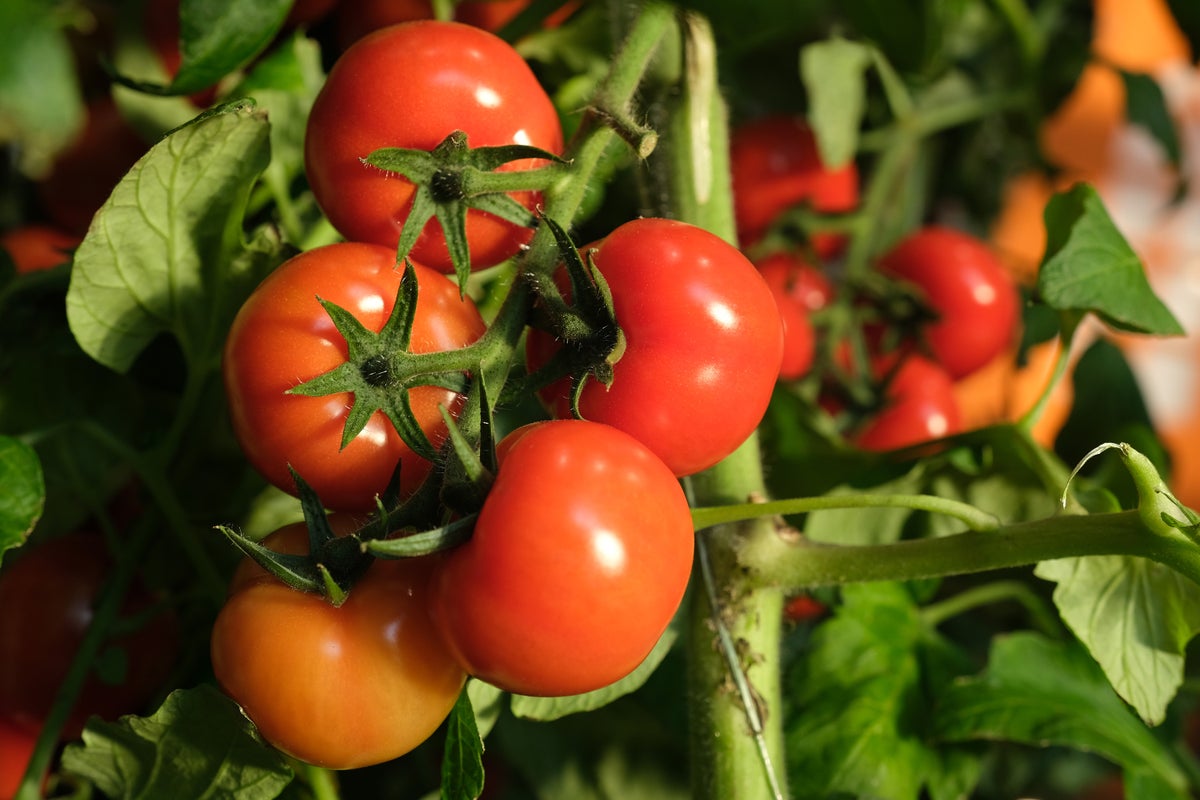
Supermarkets around the UK are rationing their supplies of fresh fruit and vegetables amid a shortage of produce including tomatoes, cucumbers and peppers.
Lidl, Tesco, Aldi, Asda and Morrisons are among the supermarkets to have introduced customer limits on certain fresh products as shelves remain bare.
Retailers believe the problems stem from poor yields on the continent and north Africa and that supplies will improve in the coming days or weeks. Meanwhile, the National Farmers’ Union’s deputy president Tom Bradshaw said a reliance on imports has left the UK vulnerable to “shock weather events”.
The UK, Bradshaw believes, has hit a “tipping point” and needs to “take command of the food we produce”.
With that in mind, The Independent asked writer and journalist Alice Vincent – author of the critically acclaimed books How to Grow Stuff: Easy, no-stress gardening for beginners and Rootbound, Rewilding a Life – for some tips on growing your own tomatoes at home.
- Before you start, you’ll want to work out whether you want to grow bush or cordon tomatoes. Bush tomatoes are ideal for smaller spaces or if you’re planning to grow in containers – they make for squatter plants and won’t need as much staking; in fact, you can even grow trailing ones. Cordon tomatoes grow much taller – up to two metres – and, crucially, against a stake. They’re great if you have a greenhouse, sunny back wall or are short on floor space, but they do need more fussing over.
- If you want to grow tomatoes from seed, now’s a good time to get started. Tomatoes benefit from getting a bit of a head start on the season, and with the spring equinox ahead the days are lengthening rapidly – so they’ll soon be shooting up. If you don’t have a seed tray, you can use small plant pots or even reuse yoghurt pots. Fill these with peat-free seed compost, pat down and water the soil well, and place three or four seeds on the surface of the soil before lightly covering with more soil or vermiculite, if you have some. Then place your pots or trays inside a clear plastic bag to keep in warmth and humidity. If you have a heated propagator, you can use this instead. Tomatoes need warmth to germinate – or sprout – and grow well, ideally around 18C, and good daylight. A sunny windowsill is a perfect spot.
- Within a couple of weeks you’ll have seedlings, and if you’ve sown in a seed tray they’ll be needing potting on or putting into bigger pots. This is best done when the plant has two true leaves – larger, fluted leaves, rather than the smaller rounded seed leaves. The crucial thing with tomatoes is not to damage the stems. Prepare larger pots with compost as before, and water well, then make a hole in the middle with your finger. Use a pencil to gently probe beneath the seedling to unearth the seed and the root, and then carefully lift the seedling up by one of its true leaves and put into the hole in the new pot. Firm down and water well. Keep them somewhere bright and sunny and water well. They need the temperature to be around 16C, so if need be keep with the plastic bag greenhouse.
- Your seedlings will become proper plants over the next month. When you start seeing flower buds appear you can move them into their final position. Tomatoes are hungry plants that benefit from space. As a rough guide, two plants are plenty for a bag-for-life-sized container (bags for life make good grow bags for edible crops as you can reuse them afterwards). Whether you’re planting into the ground or in a container, make sure you’re using the best-quality, peat-free compost you can find as this will boost growth, and keep the plants well-watered and in a sunny spot. If you’re growing cordon tomatoes, stake them and start removing side shoots. Bush tomatoes won’t need their side shoots removed, so stake as you see fit – or if the plant looks like it needs support.
- Once your plants have flowered they’ll start to fruit, which is a crucial time for them to be fed. Use a high-potassium feed, or tomato feed, every couple of weeks, and always feed into wet soil if you’re using a liquid feed.
Alice Vincent’s new book, ‘Why Women Grow: Stories of Soil, Sisterhood and Survival’, is out now via Canongate Books







